Editor's Note
Editor’s Note: Grand Banks is a seasonally operated oyster bar aboard the Sherman Zwicker at Pier 25 in Manhattan. Its 2016 season will begin in mid-April for drink service, and will fully reopen in May. Kerry Heffernan is Grand Banks’ executive chef.
It’s seven in the morning when I arrive at Pier 25, Hudson River Park. The sun is just beginning to rise over the Hudson, and the light is illuminating the endless sea of silver high rises in the sky. I slowly make my way down Pier 25 to the Grand Banks, our meeting spot for today’s voyage. The temperature is a comfortable 55 degrees, but I have been warned to dress warmly since it will feel significantly cooler on the water.
The next to arrive are Caitlin and Alex, our photographers for the day. We huddle around the historic schooner, anticipation building, and wait for the man we’ve all gathered here to meet––Kerry Heffernan. Heffernan is a long-standing veteran of the culinary world. He’s been cooking for over three decades and has worked in some of the world’s most prestigious restaurants including Eleven Madison Park and South Gate––but there is more to him than his impressive resume. Heffernan is a long time advocate and promoter of sustainable fishing and consumption. He has been working on a campaign called Save Our Stripers, an ambitious attempt to restore striped bass numbers by removing them from restaurant menus. In the process he has rallied some of his industry friends to join the endeavor, including names like Tom Colicchio, Ben Pollinger and Todd Mitgang.
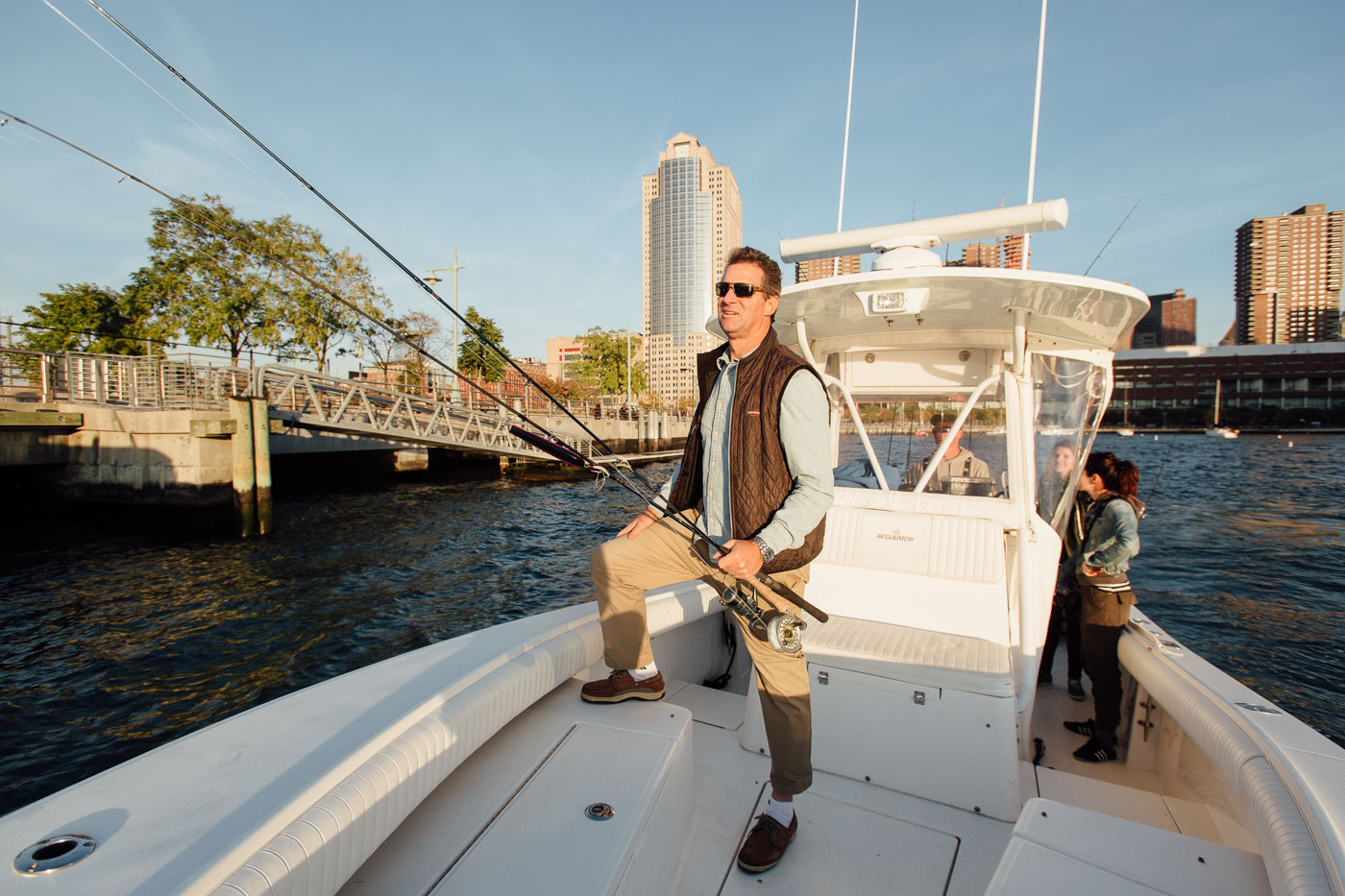
The immediate goal is to convince chefs to eradicate stripers from their menus and replace them with fish that are more plentiful, setting a precedent for other chefs––and thus an example for the general public and diners. As many chefs have become pop culture icons, we now live in an age in which people increasingly look to such chefs for guidance and inspiration regarding what to eat and what to cook. The campaign hopes the changes made in commercial kitchens will have a major trickle down effect––that the demand will drastically decrease, and have a significant impact on the fish market.
Shortly after 7:30, I see Heffernan walking down the pier carrying a cooler; it’s filled of bait and fishing poles. He’s wearing a pair of khakis and a denim blue button down with a lightweight navy vest, a warm smile spreads across his face as he shakes my hand good morning. Heffernan skeptically looks over my outfit; he asks if it’s all I’ve brought along, and I immediately I regret not packing more layers. We wait on the dock for the fishing boat we chartered to arrive, while he strings up fishing poles and we casually discuss the campaign and his hopes for the future of stripers.
As we’re getting deep into our conversation, our sport fishing boat arrives. It’s much smaller than I expected, and the current drags it back and forth as I cautiously board. I meet Captain Frank, our tour guide and fishing expert for the day. Heffernan runs back to the Grand Banks to pack our lunch for later in the day. We untie the boat and pull up alongside the wooden schooner. Heffernan hops over the railing with confidence and lands gracefully on his feet––clearly accustomed to the motion of the sea.
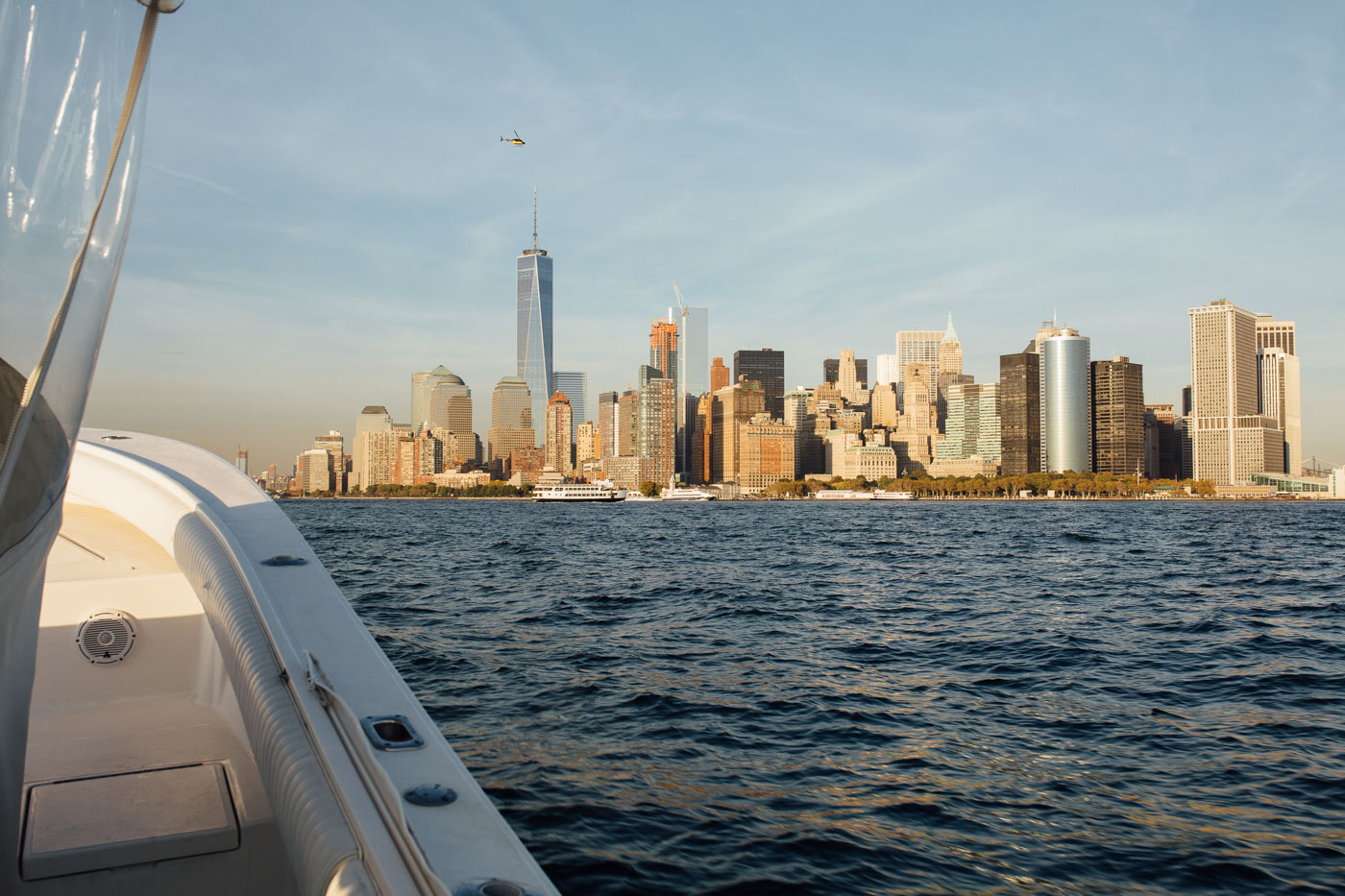
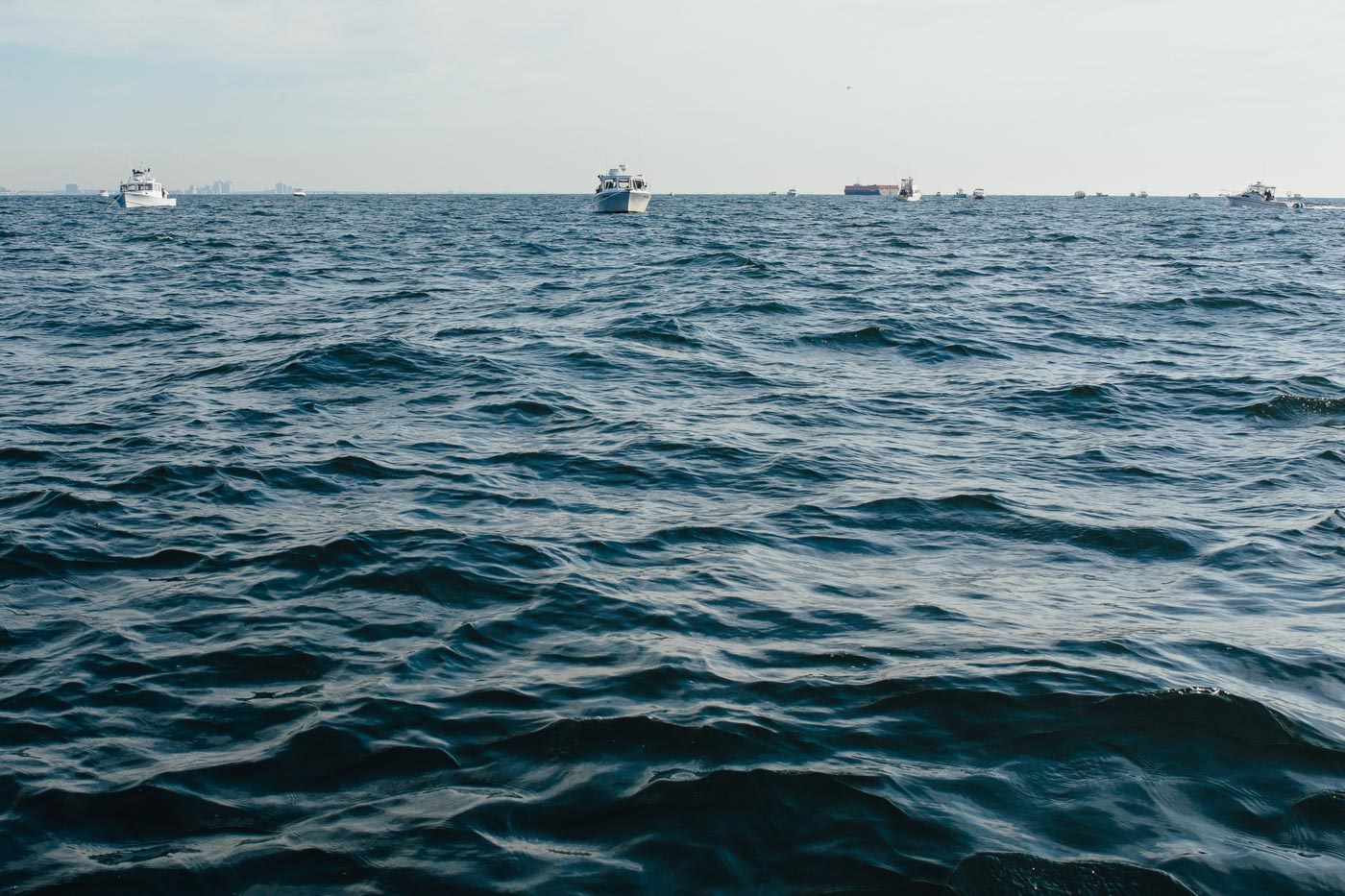
In a matter of minutes we’re gliding across the water, leaving a pool of white foaming ripples in our wake. There aren’t enough seats for all of us, so the captain and Heffernan sit behind the wheel while the photographers and myself hold onto the backs of our seats with everything we’ve got. As we get farther from shore, the captain cranks the speed up to 50 miles per hour, sending the boat into the air as we hurdle over the passing current. We pass the Statue of Liberty and weave beneath the Verrazano Bridge while the wind washes over us, sending chills down my arms. The first stop of the day is Breezy Point off the coast of Queens.
Soon after we arrive, the engine is cut and the boat is allowed to drift along the water while we fish. In what feels like a matter of seconds, Heffernan shouts that he’s got something. I can’t see at first, but then a ghostly, shimmering image appears beneath the surface. He hoists his catch onto the dock and we quickly realize it’s a small porgy. The captain and Heffernan share in a moment of disappointment before throwing it back into the water.
Our morning continues to pass in a similar fashion. Each time we think we’ve got something, it turns out to be another porgy. Heffernan begins affectionately referring to our puny catches as “micro porgy.” Without much action, we take the opportunity to chat further about the campaign and what prompted its formation. During The Manhattan Cup, the largest inshore catch and release fishing tournament of the Northeast, hosted by the Fishermen’s Conservation Association, Heffernan won the fly fish portion of the tournament with an 18-inch striper; anglers in the other categories didn’t fair much better. It was a tipping point in what had been an already alarming situation.
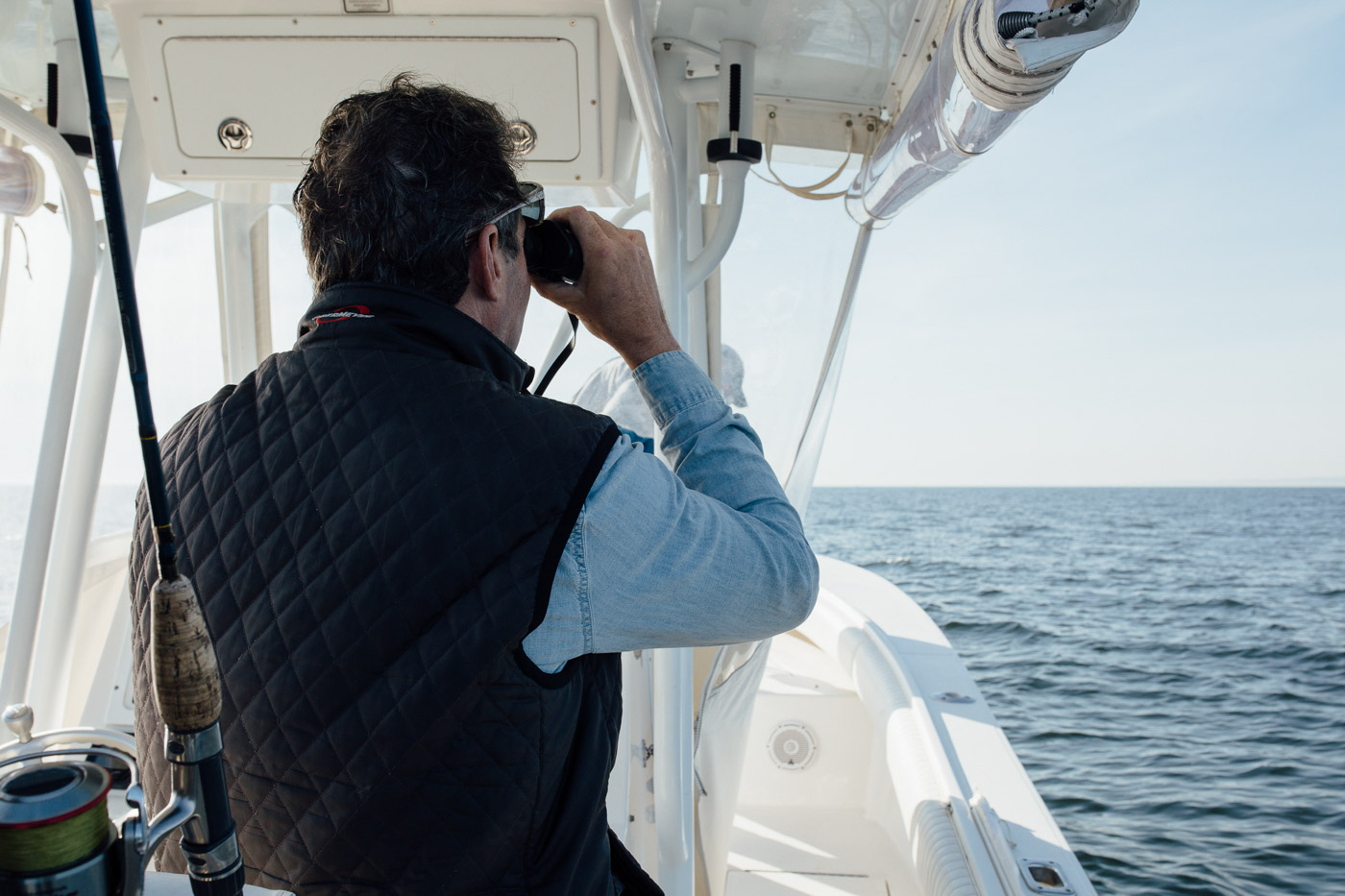
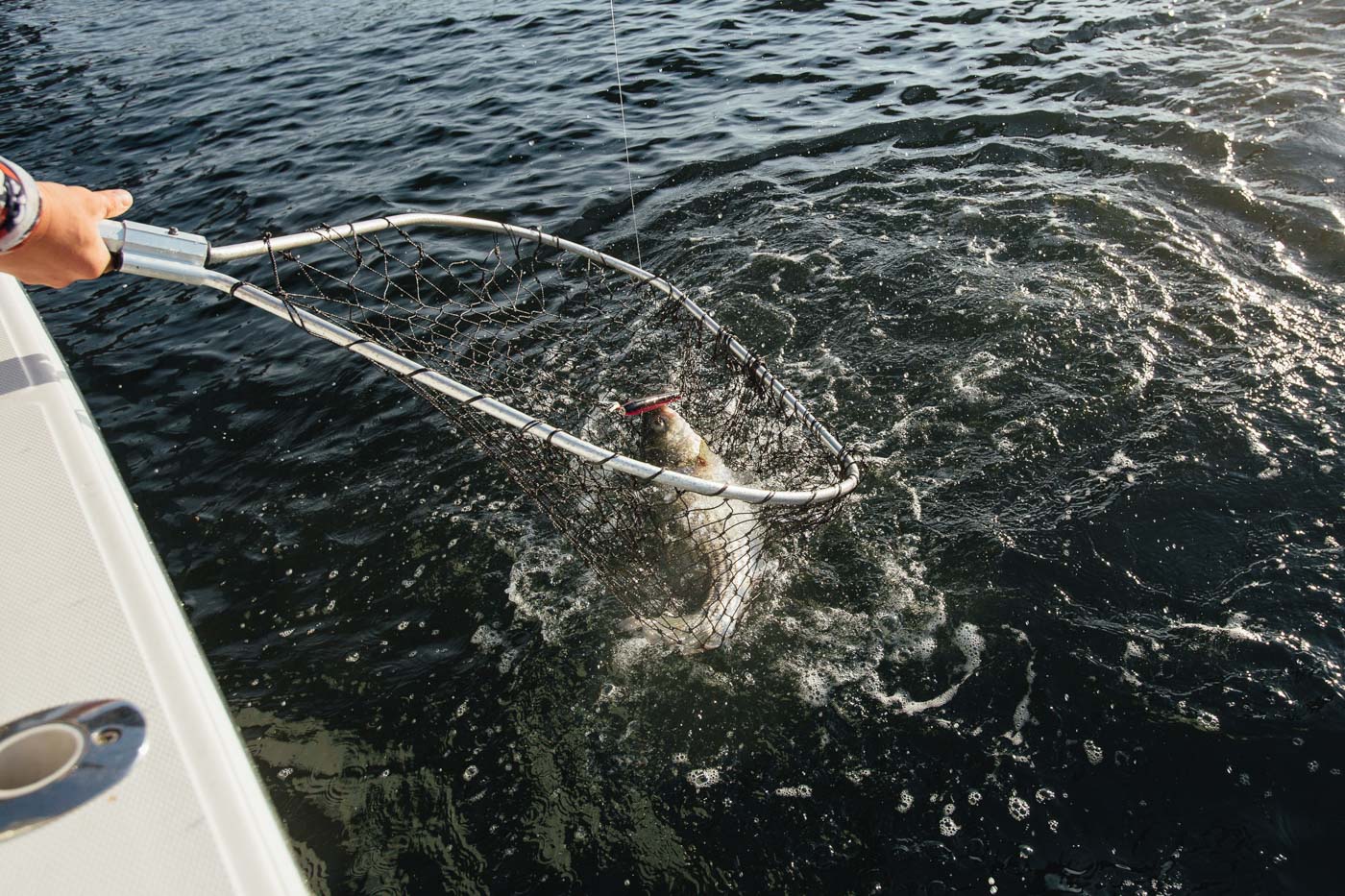
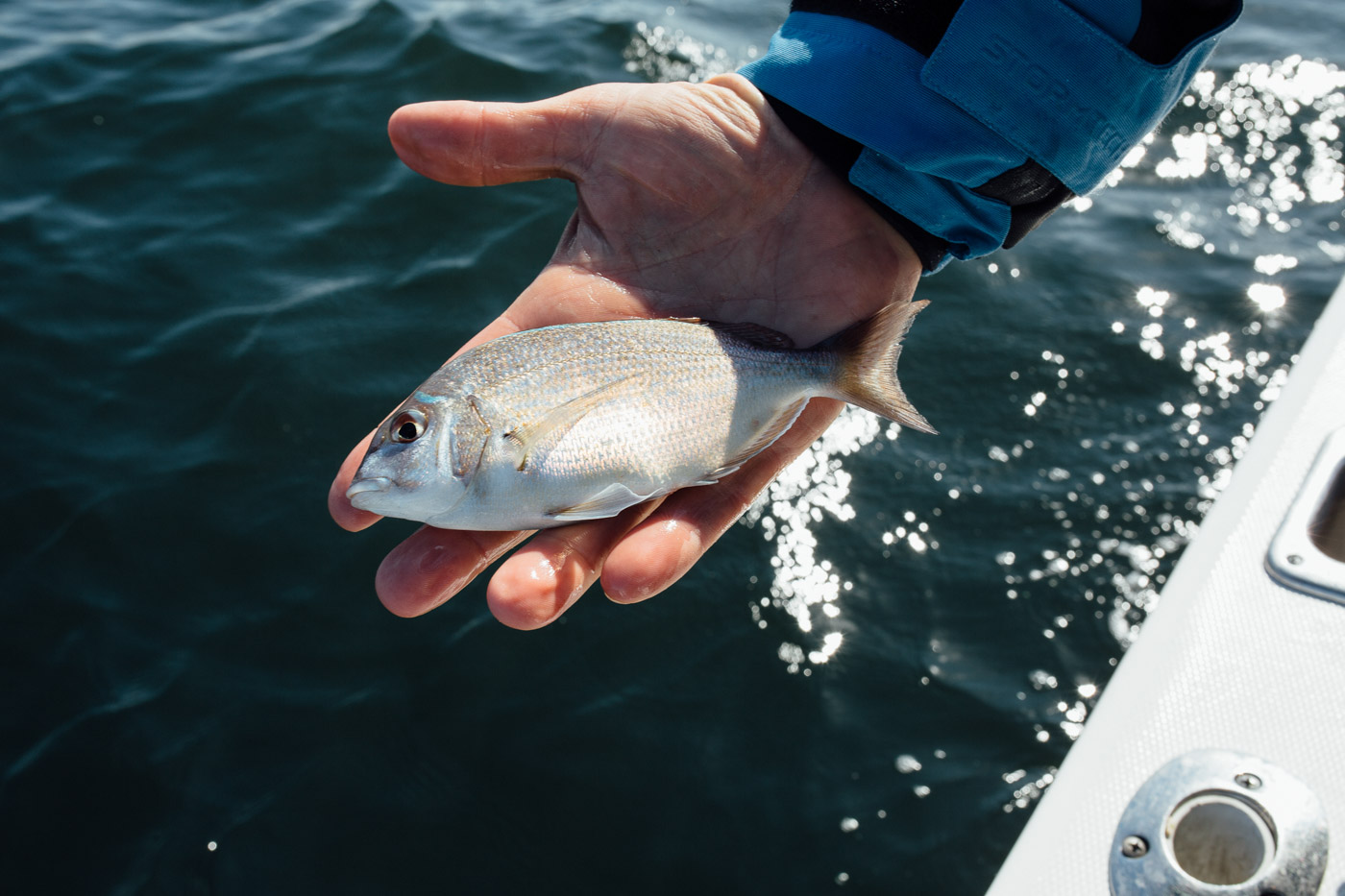
In the 90s, a fairly similar situation was taking place with the depletion in number of swordfish. A campaign similar to Save Our Stripers, called Give Swordfish a Break, was presented to the public to shed light on the overfishing and consumption of swordfish. Part of the campaign’s goal was to get chefs and consumers to remove swordfish from menus and dinner tables. The campaign was able to generate enough steam that restaurants, chefs, hotels and major cruise lines pledged abstinence from the endangered fish.
As the morning turns to afternoon, the sun hangs high turning the once dark blue water to a shining shade of jade. With little to no luck catching fish, we decide it’s time for lunch.
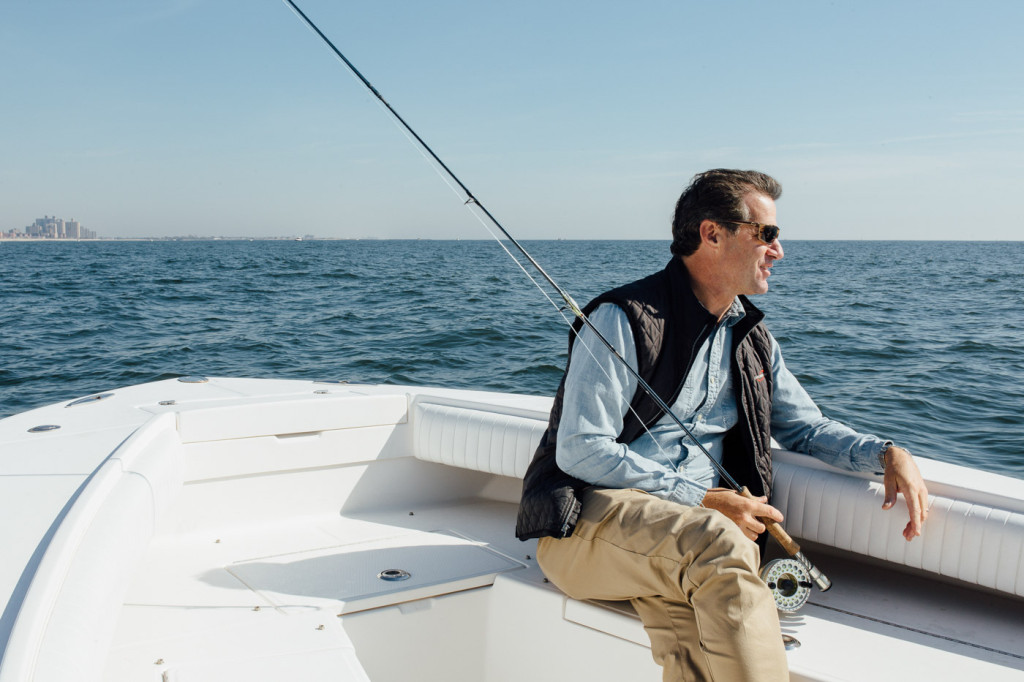
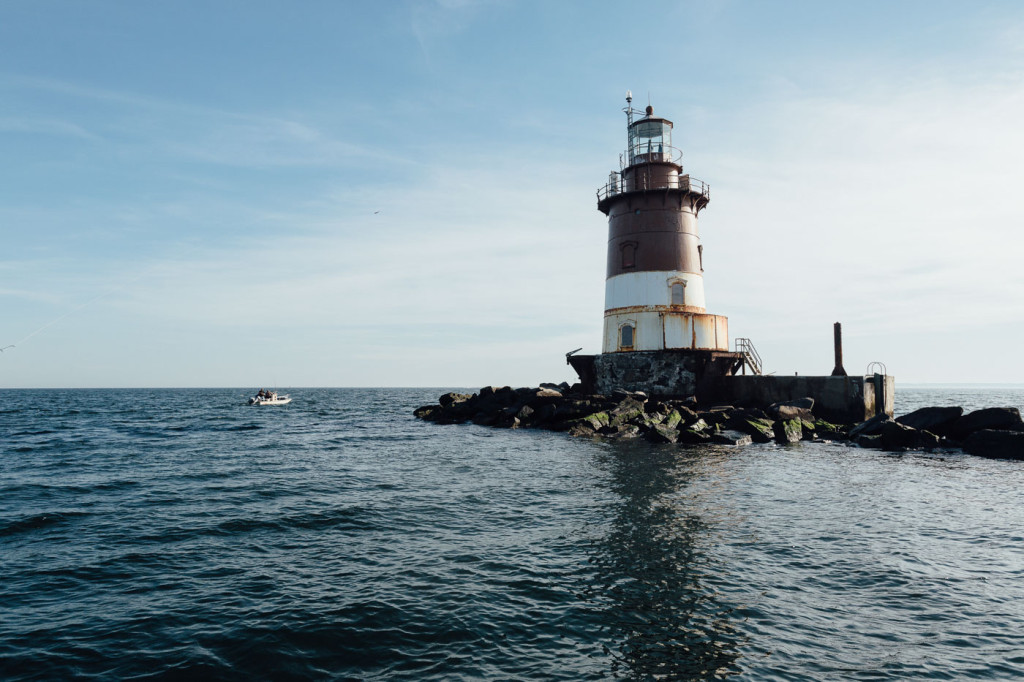
Heffernan tosses me a quart container and a bag of hot dog buns. “I hope you like lobster rolls!” he calls. I remove the rolls––each one warm from the sun––and stuff them with as much lobster meat as they’ll hold before passing them around the boat. Heffernan pops open a bag of chips and sodas and we toast to a day on the water. I take a giant bite of my lunch and savor the sweet, luxurious meat of the lobster. After lunch comes dessert; we sit at the head of the boat in the warmth of the sun as we peel and enjoy the juiciest clementines.
Just as I begin to become a bit too relaxed, Captain Frank notices a commotion among the birds. As a first time fisher I’m given a quick lesson on determining where the action is; step one––follow the birds. There is a rush to start up the boat’s engine, and we take off speeding in their direction as they swoop in from the sky and hurtle toward the water. Heffernan goes after his fishing pole and begins whipping it back and forth into the water. Once we reach the center of the activity, we cut the engine and wait.
After what feels like an eternity I finally let out the breath I didn’t know I was holding. Once again we’ve been lead to a dead end. Heffernan walks over with his head down, apologizing for what he calls an unsuccessful day. I laugh at this; to me it’s been thrilling. We circle back and forth to a few different spots hoping for a last dose of luck. Throughout the day, Captain Frank has been on his radio corroborating with his compatriots out on the water; their luck hasn’t been much better than our own.
We decide to cut our losses and head back to the Grand Banks. On our return we make a quick stop below the Verrazano; the contradictory scene––the calm, swaying water below and the rush of the commuter traffic above above isn’t lost on us. As we’re about to leave, Heffernan shouts but the words are muffled by the sounds of the passing cars. We rush over and watch him pull on his reel. The tip of the rod is bent, tipping into the water, struggling.
It happens in a matter of seconds––before I can react, Kerry is standing over a large silver and striped beauty. The fish flaps back and forth; we stare wordlessly at one another, mouths agape in disbelief for a moment––and then come our cheers and applause. Heffernan holds up the striped bass, looks into its eyes in appreciation before he kisses its head and releases it back into water. There’s a moment of silence once the fish is gone and then we all burst into fits of hysteria at the irony of the day. We set out to catch porgy, bluefish, blackfish, and ended up with a striper, as if to say, “I’m still here.”
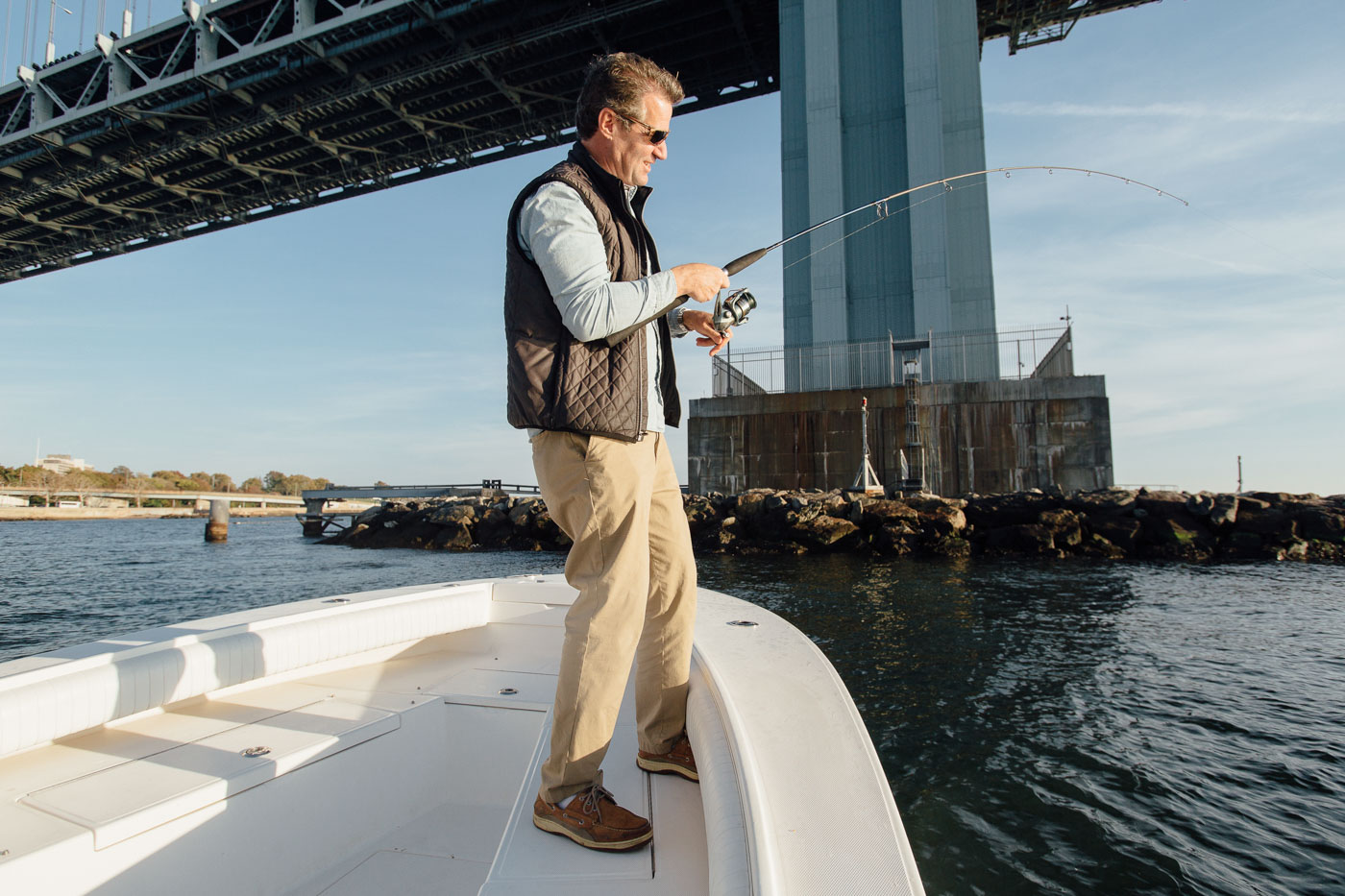
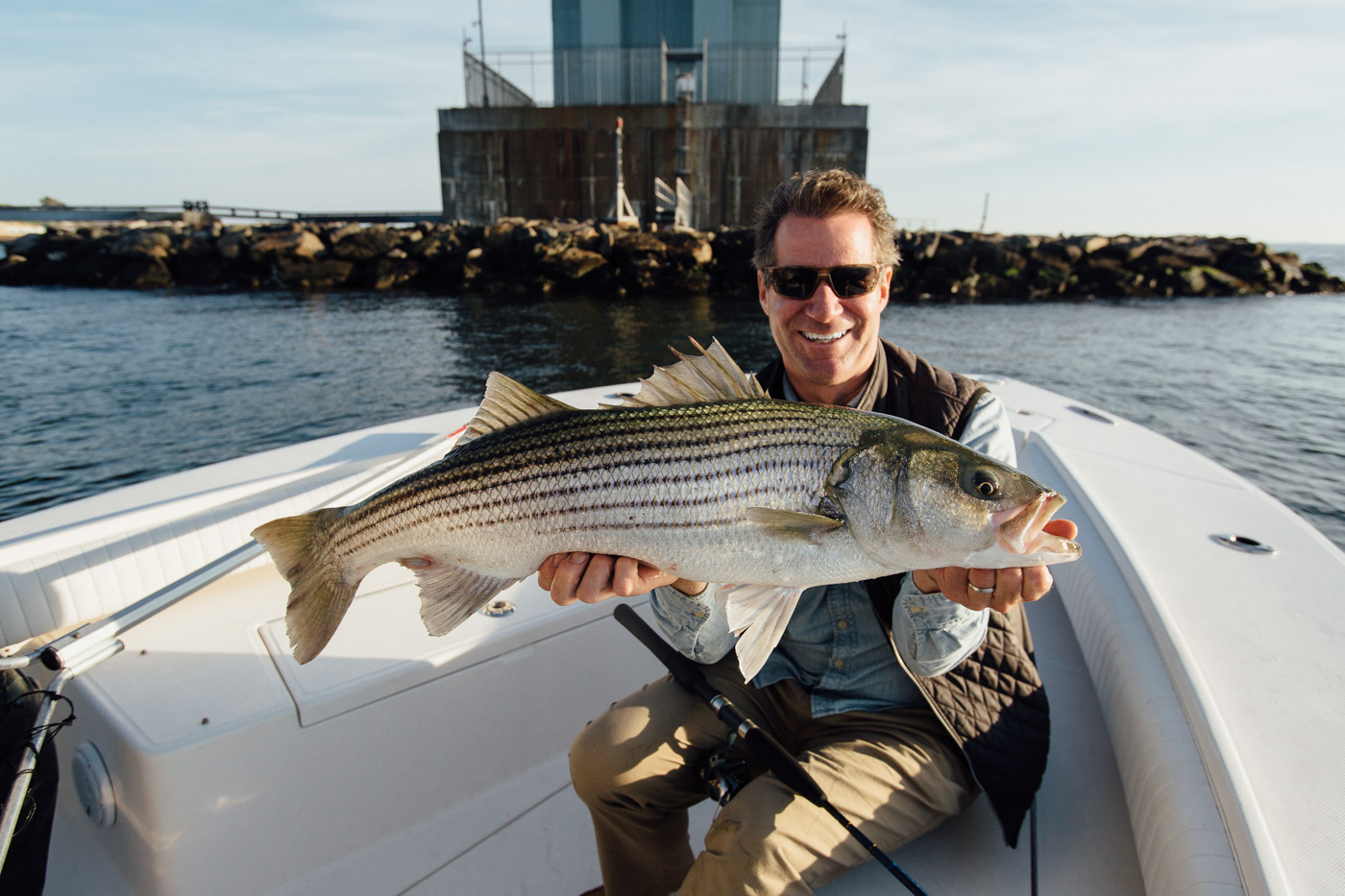
We finally make it back to the Grand Banks and bid farewell to our captain. Heffernan rushes off to the kitchen to get his mise en place for the demo he promised me earlier. I sit by the bar and enjoy a round of freshly harvested Chesapeake Bay oysters. The oyster shucker stands behind the bar surrounded by seaweed and works with mechanical precision popping open oyster after oyster. My years on the line and endless accidental stab wounds have taught me that this is no easy job and I pay my compliments to him. My platter is presented to me and after a healthy dose of lemon juice I slide one into my mouth. Its plump and briny body goes down in one slurp.
Before long, Heffernan arrives with a giant platter. On it is a porgy, some oil, avocado, vinegar and a few other items I can’t make out. Heffernan runs his knife along the fish, slicing and garnishing it with various accouterments. With the same smile that greeted me in the morning, he pushes the plate over. I pick up my fork and take a bite. My head swims with the delicately sweet and slightly acidic flavor of the fish, while bursts of fresh citrus bring me back to the moment. At the end of the day, Heffernan is still a chef; he rushes off to be with his crew in the kitchen and leaves me to my dinner. I sit and look out at the water, noting how different it looks from up here. As the sun sets, the golden hour washes over the city illuminating everything in a fresh light, and I think to myself, “kiss and release.”
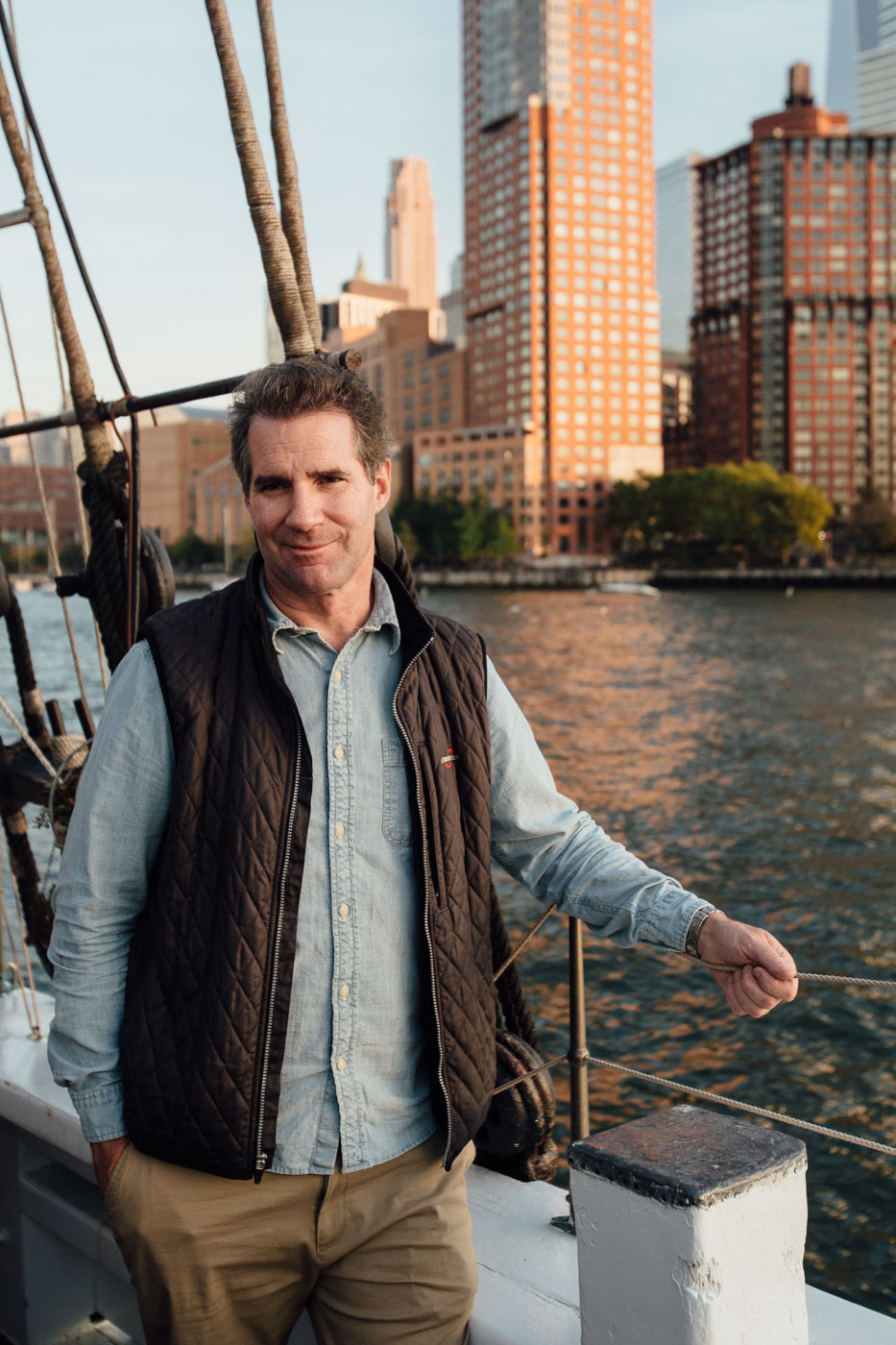
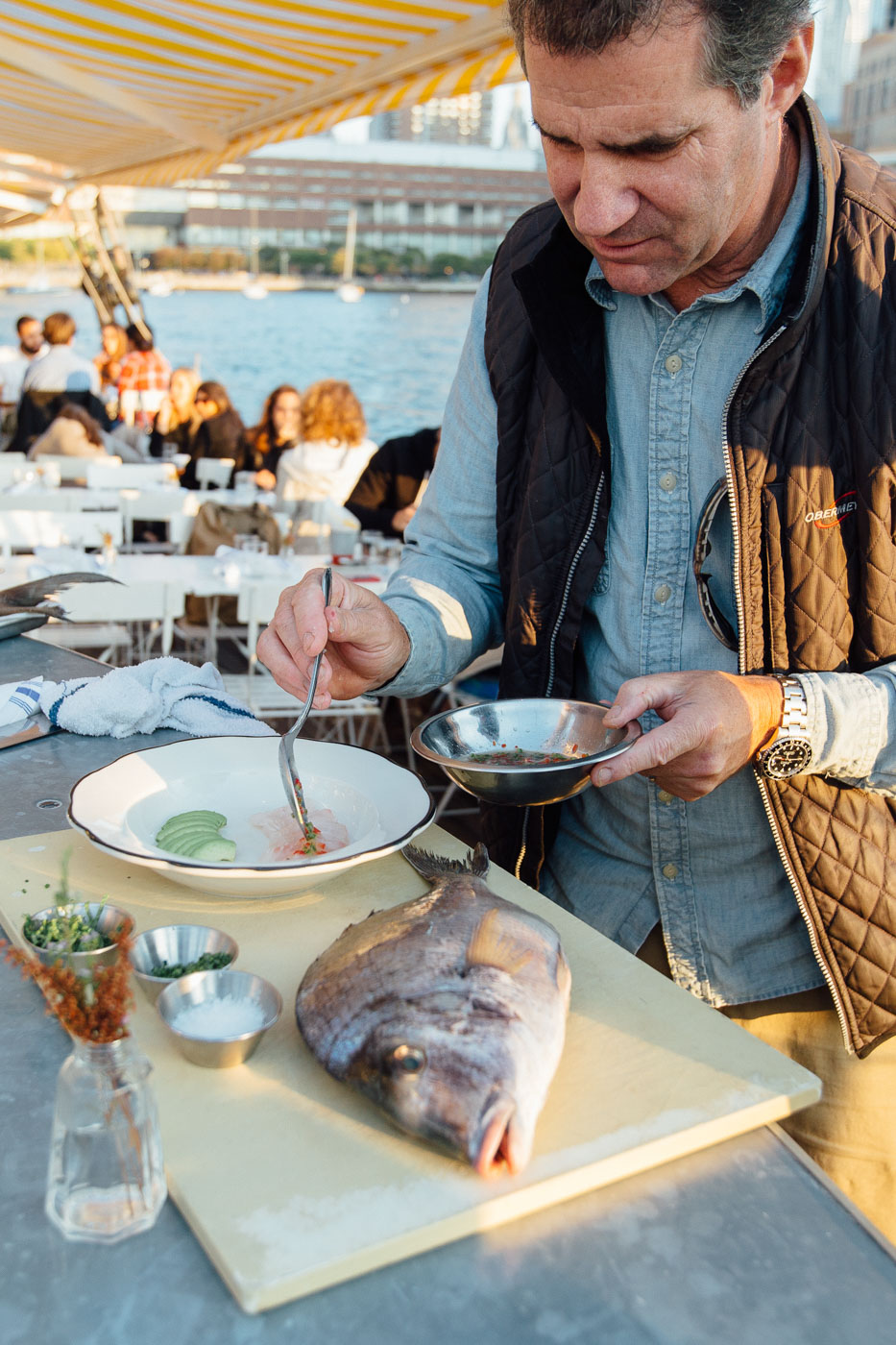
—
Grand Banks
Pier 25
Hudson River Park
New York, NY 10013

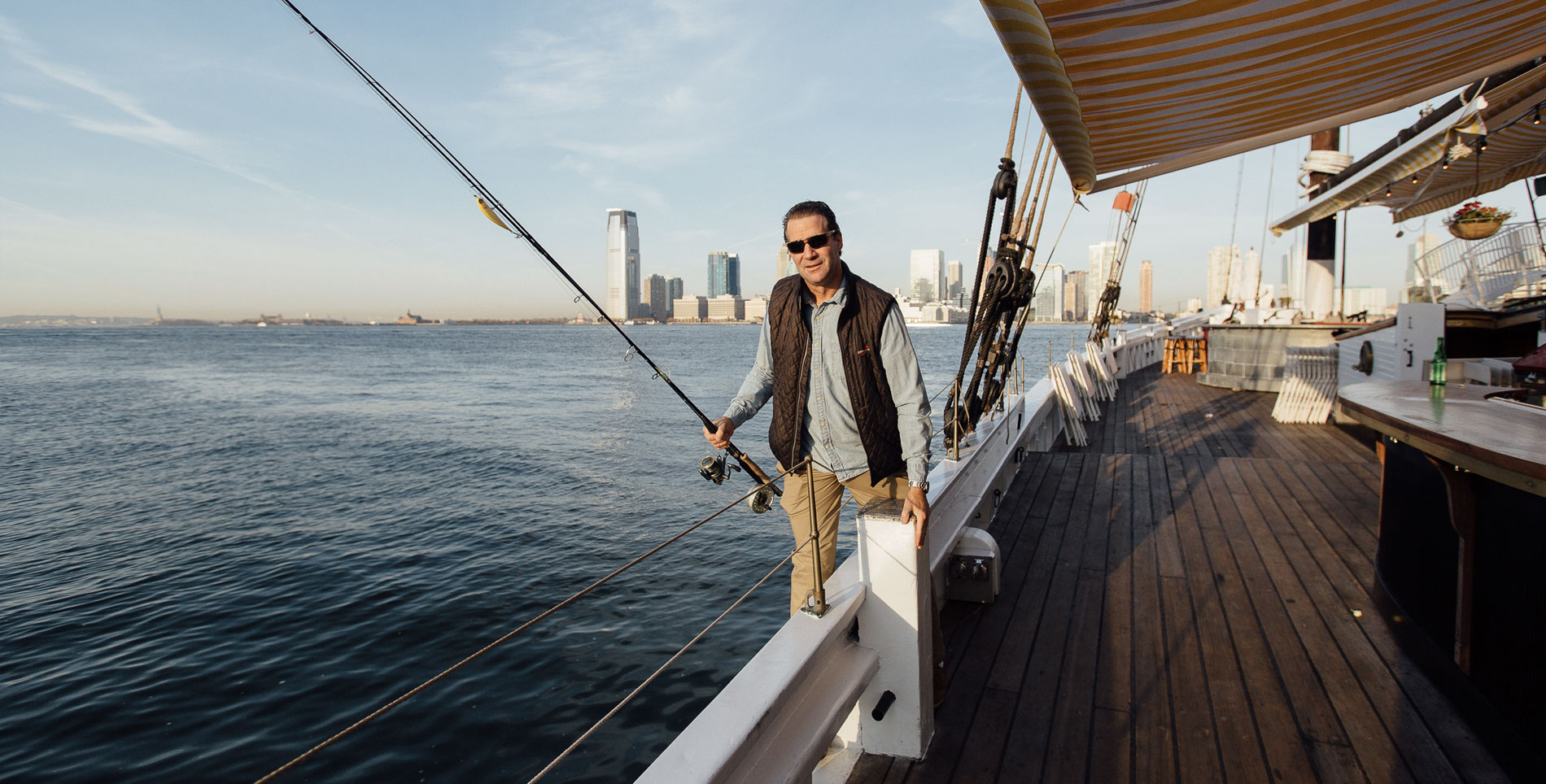

Our comments section is for members only.
Join today to gain exclusive access.